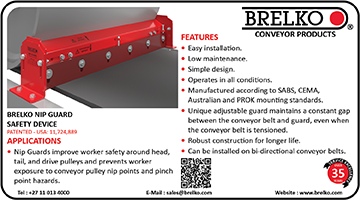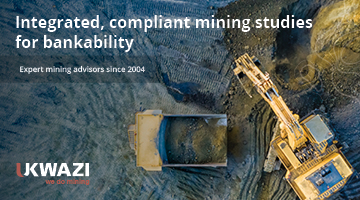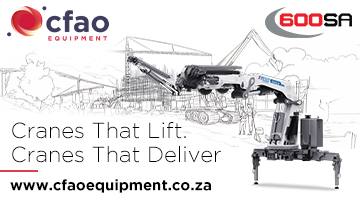By Dr Christine Vivier, Ukwazi Sustainable Mining
The mining industry plays a vital role in supplying the raw materials for our modern world, but its environmental impact is a cause for concern. This is especially true as the competition for minerals critical to clean energy production intensifies.

Mining companies must now manage and comply with stricter sustainability metrics to remain competitive. Ernst & Young’s (EY) annual report “Top 10 Business Risks and Opportunities for Mining and Metals” underscores this point, highlighting Environmental, Social, and Governance (ESG) risks – particularly water stewardship and biodiversity – as urgent priorities linked to climate change.
However, a positive shift towards sustainable mining is gaining momentum. This movement aims to minimise environmental impact while ensuring continued resource extraction. Deloitte’s “Tracking the Trends 2022” report echoes this sentiment, emphasising that “Embedding ESG into organisations” is crucial for mining companies to maintain a competitive edge in the coming decade. The path to sustainability encompasses every aspect of a mining operation. Companies can start by focusing on three key areas within the realm of sustainable production: maximising the recovery and yield of valuable resources and utilising intelligent mine planning and design systems for low-waste and low-carbon extraction.
By harnessing the combined power of Life Cycle Assessments (LCA), sustainable mine planning software, and Green Net Present Value (Green NPV), the mining industry can unlock a powerful force for positive change. This trifecta empowers companies to optimise operations and execution, driving sustainable practices throughout the mining lifecycle:
LCA provides a comprehensive understanding of the environmental impact over the life of mine.
Mine planning software translates this understanding into actionable strategies through sustainable design.
Green NPV ensures these strategies are financially sound and contribute to a sustainable future.
Life Cycle Thinking: Unveiling the Hidden Costs
Think of LCA as a deep dive into a mine’s environmental footprint. It analyses the impact across the entire life cycle, from exploration to post-mining reclamation. In the context of mining, mine planning can be considered an aspect of process design, and offers the opportunity to apply eco-design during this phase. Mine planning refers to the process of selecting a particular material for extraction and designating the order and time of extraction to minimise cost or fulfill a specific business target. This process can occur well in advance of operation and can be updated throughout the life of the mine.
Environmental LCA is becoming a valuable tool in mine planning, contributing to a more sustainable mining future. Here’s how LCA integrates with the mine planning process:
1. Identifying Environmental Impact Hotspots
LCA helps identify stages in the mining process with the most significant environmental impact, such as energy consumption during extraction, water usage in processing, or waste generation throughout the life cycle. In a practical example, we have examined a major manganese operation in the Northern Cape that has these issues and are looking at combining the mine planning process with open pit rehabilitation, final void use and future land uses.
2. Informing Sustainable Mine Design
LCA results can be used in mine planning software to visualise the environmental impact of different design choices, such as comparing the environmental footprint of open pit mining versus underground mining or assessing the impact of different waste disposal strategies.
3. Optimising the Mining Process
LCA data can optimise the entire mining process from a life cycle perspective by minimising resource depletion, reducing greenhouse gas emissions, and promoting biodiversity preservation. This is critical for planning mines with closure and post closure in mind.
4. Scenario Modelling and Decision-Making
LCA data helps to predict the environmental impact of different mining scenarios, empowering planners to choose the option with the lowest environmental footprint while meeting economic and technical requirements.
Specific examples of LCA application in mine planning include optimising haul truck routes, water management strategies, and waste segregation and disposal planning. Optimisation of machine idle times, traffic blockage, excavation priorities, fleet allocation, unnecessary re-handling, and machine relocation are such opportunities that can improve the life-cycle energy use and reduce greenhouse gas (GHG) emissions. Furthermore, LCA can aid in waste management and rehabilitation planning by evaluating the environmental implications of various disposal methods and post-mining land uses. By considering these factors upfront, mining companies can develop more sustainable strategies for managing waste streams and restoring mined landscapes.
Mine planning software is evolving to incorporate planning with a Green Lens. Advanced software allows for creating detailed 3D models that factor in environmental considerations. This enables planning for minimal waste generation, optimised land use, and effective reclamation strategies.
Green NPV: Balancing Profit with the Planet
The concept of Green NPV involves incorporating environmental costs and benefits into traditional NPV calculations. This approach integrates LCA data and seeks to assign monetary values to environmental impacts, encouraging sustainable investment decisions. By combining LCA and Green NPV, mining companies gain a comprehensive understanding of environmental impact and can translate this knowledge into financial terms for decision-making. Green NPV encourages companies to prioritise projects that are not only profitable but also minimise environmental damage. The approach can lead to long-term financial and environmental sustainability.
Embracing these tools enables mining companies to make informed decisions that balance profitability with environmental responsibility, ultimately contributing to a more sustainable future for the industry and the planet. As LCA and Green NPV become more widely adopted, the mining industry has the potential to evolve into a responsible steward of natural resources, ensuring continued access to materials while safeguarding the environment for future generations.
The Road Ahead
While challenges remain, such as standardising LCA methodologies and effectively assigning monetary values to environmental impacts, this trifecta of tools offers a roadmap for a sustainable mining future. By embracing these advancements, the mining industry can ensure continued resource extraction while minimising its environmental footprint and contributing to a greener future for all.















